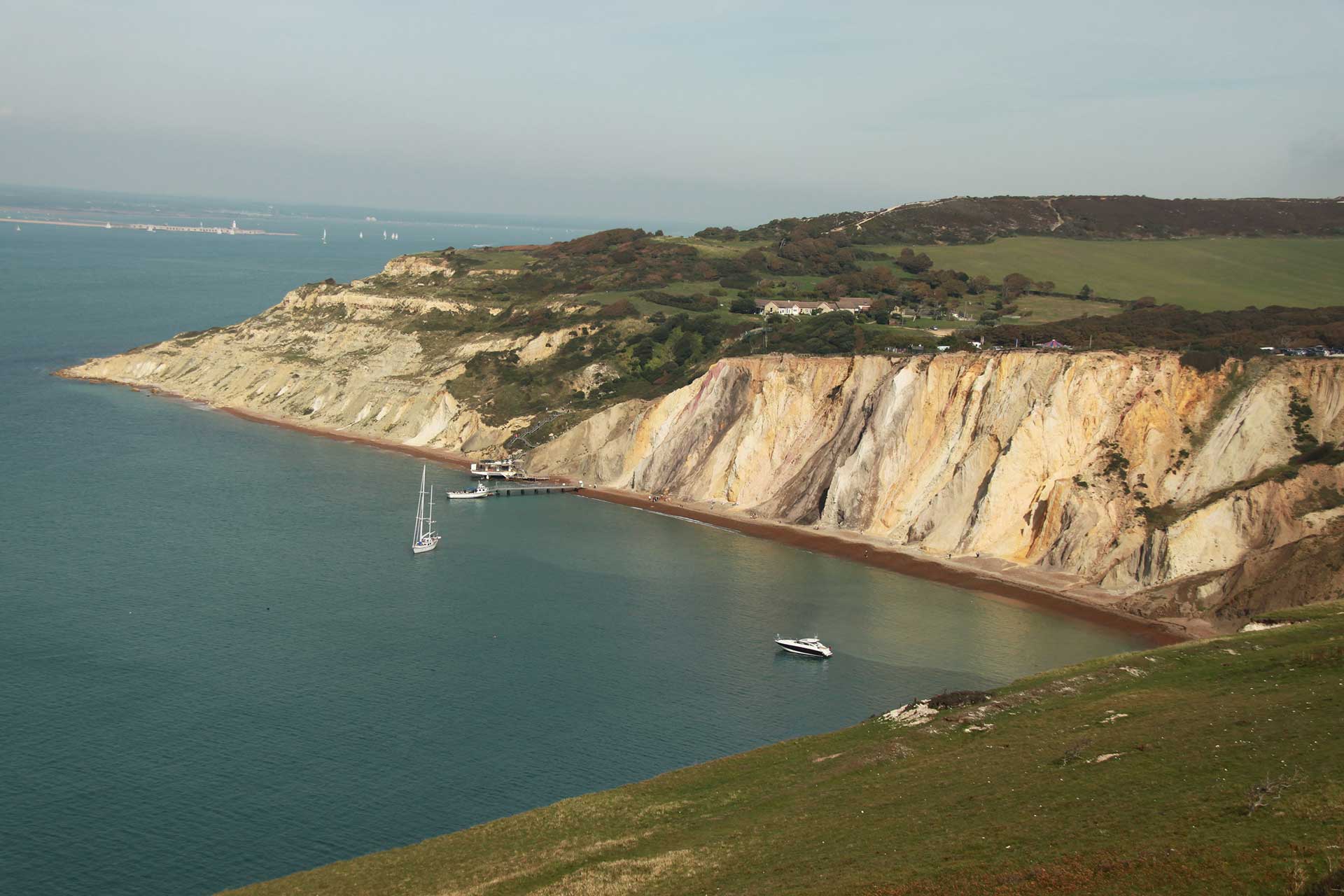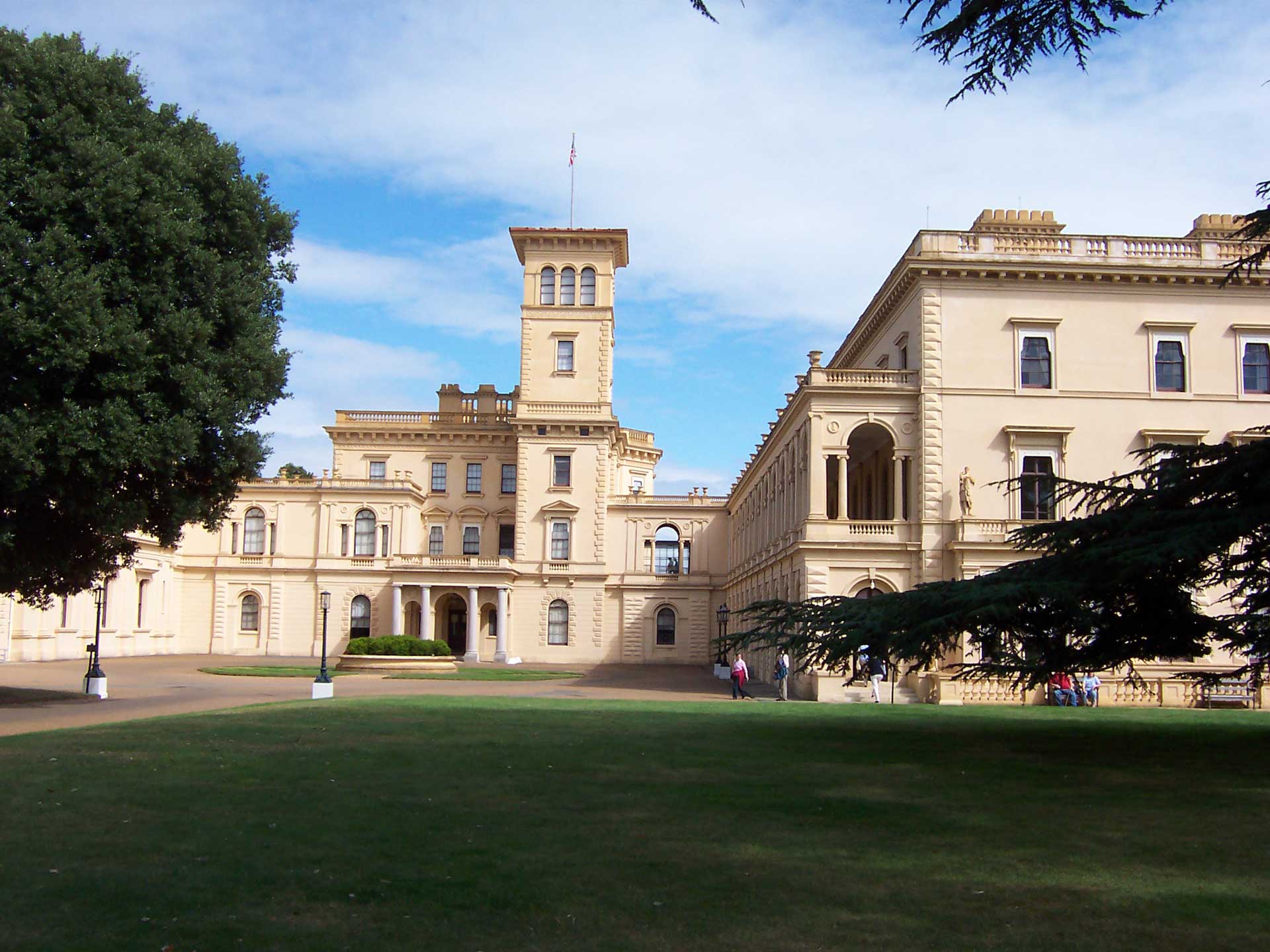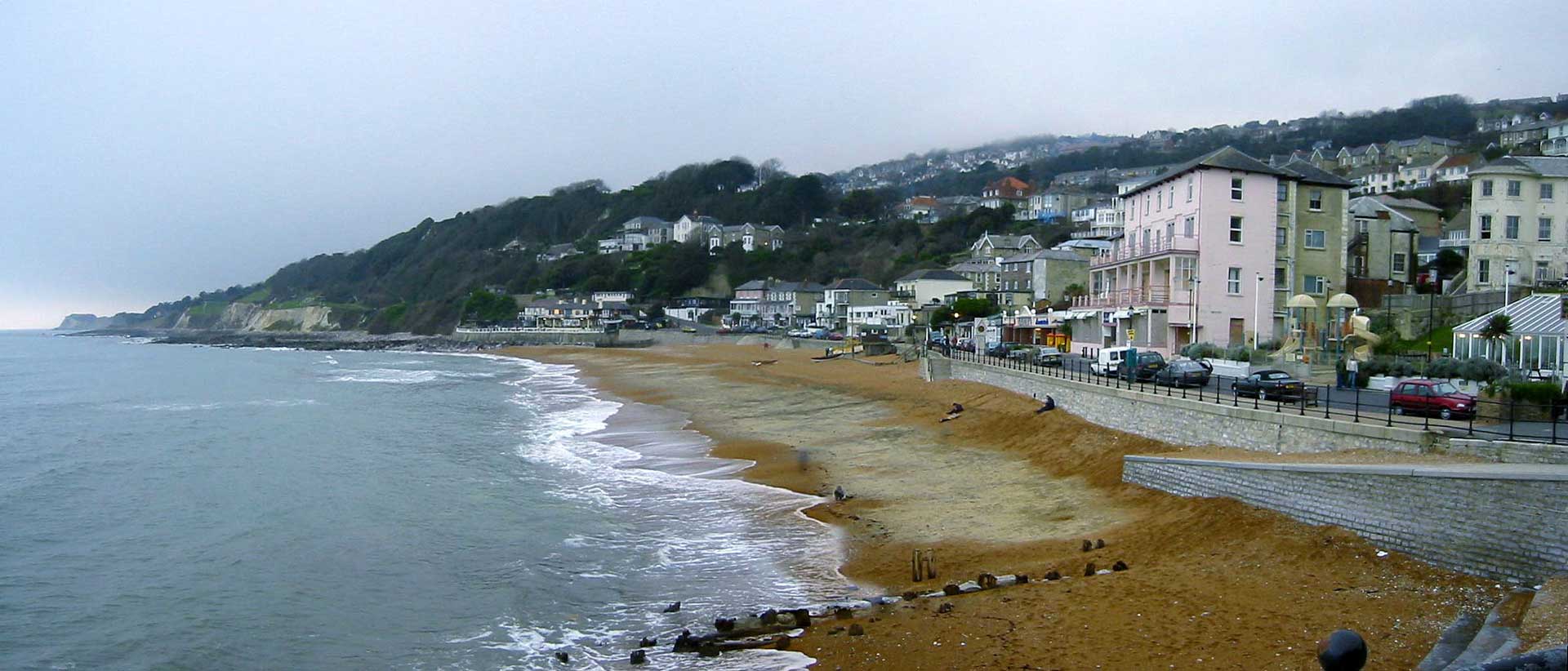

 Islands
Islands
The Isle of Wight, a unitary authority since 1997, lies off the South coast of England and is 36 kilometres East to West and 22 kilometres North to South. The island has an incredibly varied geology and landscape which, as now, attracted settlers from the Early Bronze Age and Roman times.
During the 19th Century the island became a popular tourist destination especially after Queen Victoria chose Osborne House on the island (East Cowes) as her summer residence. Tourism remains a key element of the islands economy along with real estate, agriculture, marine engineering, electronics and aviation engineering. Of the islands principal towns, Cowes, Ryde, Sandown, Shanklin and Ventnor, Newport at the centre of the island is the main centre and hub of the transport network.
The island was designated in 1963 as an AONB (Area of Outstanding Natural Beauty) and covers about half of the island, mostly near the south-west and north-west coasts. The whole of the Isle of Wight (including the waters around the Island) is now a UNESCO Biosphere Reserve. The award was made by the United Nations Man and Biosphere Co-ordinating Council in Paris on the 19th June 2019.
The Isle of Wight Council administers an area of 380.21 square kilometres Whilst the overriding character of the Island is rural (approximately 68% of farmland and 8% of forestry and woodland), about 60% of the population live within the main towns of the Island. The island has 100 sq mi (258 km2) of farmland, 20 sq mi (52 km2) of developed areas
In 1995 the population was 126 168 and has grown by approximately 16.8 per cent between 1971 and 1995. It expanded by 12.4 percent to 141 771 people between 1995 and 2019 (population estimates mid-year, ONS). The increase was driven by an expansion in the number of residents aged 65 and over. The Island has been successful at attracting people aged 65 and over to retire, and this trend is likely to continue in the future.
1. Employment
In 1999, employment on the Isle of Wight is dominated by service sector employment however the largest single source of employment is in manufacturing accounting for 19.7 per cent of all employment. Wholesale and retail enterprises employ 16.5 per cent of employees which is closely followed by health and social work (15.1 per cent), public administration (14.4 per cent) and hotels and catering (12.5 per cent). Overall service sector employment accounts for 71.6 per cent of total employment, manufacturing and construction 22.3 per cent and primary activities 0.7 per cent.
In 2018, the service sector is still dominant (78.2% of total employment), while the human health and social action sector represents 18.5% of total employment. The other sectors of activity have changed little and are distributed as follows: wholesale and retail trade, motor vehicle repair 16.7%, accommodation and catering 14.8%, manufacturing industry 9.3%, administrative and support services 5.6% and construction 4.6%.
Employment in manufacturing and construction is down (13.9%) and primary sector activities are marginal (3.2% of employment). The structure of the local economy is changing with retailing, manufacturing, construction, health and business services being the five largest employment sectors. Traditionally, the largest sectors were tourism, manufacturing and agriculture. Over the last twenty years, workforce jobs increased by around 8 600 equivalent to an increase of 15.4%. Employment growth has been driven by the accommodation and food services, education, social care, admin and support and real estate sectors, while sectors which experienced the largest decreases in employment between 2001 and 2017 include manufacturing (of computer, electronic and metal products), wholesale and other private services.
2. The local economy
The changing structure of employment on the island presented a complex picture of employment growth and decline in certain economic sectors between 1993 and 2019, as in many other European regions. Manufacturing industry has declined in favor of services.
In 1996, small and medium-sized enterprises (SMEs) dominated the island's economy: only 13 SMEs employed more than 200 workers; 78 percent of all enterprises employed fewer than 10 workers. In 2015, the majority of enterprises (85.5%) were micro in scale (0-9 employees). The Island’s business demography differs to the wider areas (Solent, South East, England) as it has a higher proportion of small scale enterprises (12.6%) and lower proportions of micro, medium and large enterprises (85.5%, 2.6% and 0.2 respectively.
For the year 2019, the island has 4 620 businesses of which 86.1% are considered micro, 12% are small, 1.7% are medium, and only 0.2% are large (over 1,000 employees).
Economic activity generated approximately £2.8 billion in 2017. Health and social work (12.9%) and manufacturing (12.3%) are the largest industry sectors, followed by construction (6.5%) and accommodation-food service (6%). Growth in real value added adjusted for inflation averaged 2.7% per year between 1998 and 2008. Since the recession, it has slowed to 1.7 percent per year between 2009 and 2018. Adjusted for inflation, the size of the economy is 1.43 times larger than in 1998.
The relatively strong growth of the economy has been driven by strong growth in manufacturing, several high-productivity services (professional, scientific and technical services, in ICT) and
tourism-related activities.
3. Tourism
One of the most important economic sectors to the island has been and still is tourism and tourism services. In 1999 the Isle of Wight attracted over 2.7 million visitors, in 2019 the island attracted 2.34 million visitors in the 12 months to March 2019, spending just over £275 millionThis growth has been achieved through an increase in short breaks and weekends as opposed to week-long seaside vacations (although the Isle of Wight continues to attract a large number of tourists for traditional seaside vacations) which has led to some restructuring of the hotel sector on the island with a small increase in the number of establishments. Since that time, tourism has remained an important activity on the island and spending per tourist has continued to increase, although visitation has tended to slow since 2007 (number of visitors 2007: 2 534 000 - 2016: 2 401 000). Still, in 2018, more than one in seven Isle of Wight businesses (13.8%) belongs to the tourism and visitor economy. Between 2010 and 2018, the average annual growth rate was 0.8% per year for businesses, and 1.9% per year for employment. In addition to British tourists, there are foreign tourists ( 2019: 49 267 tourists) and day visits that account for 5.45 million visitors. In total, for 2019, British and foreign visitors and tourists spent 141.84 million pounds, 208.6 million and 17.4 million pounds respectively.
4. Industry
The island's manufacturing industry continues to provide a large number of jobs, many of which are concentrated in the high-tech aerospace and electronics sector. Companies such as GKN Westland, British Aerospace, SP Systems and Pascal Electronics continue to play an important role. However, the end of the Cold War and the rationalization of electronics and aerospace companies has led to a decline in employment in these types of companies and the threat of further downsizing remains due to accelerated mergers and acquisitions.
The island is home to a number of advanced manufacturing companies, some of which are involved in the marine and maritime sector and the low-carbon economy. These include MHI Vestas, which makes wind turbine blades just outside of Newport, GKN Aerospace in Cowes, and BAE systems near Northwood.
5. Communication networks
Communications to the mainland are dominated by ferry services, both passenger and vehicle ferries. High speed passenger ferries operate from Portsmouth to Ryde, Southampton to West Cowes (22-25 minutes) and a hovercraft service operates from Southsea to Ryde. Journey times are between ten and fifteen minutes. Vehicle ferries operate from Portsmouth to Fishbourne (45 minutes), Lymington to Yarmouth (40 minutes) and Southampton to East Cowes (one hour)
The Island Line rail service runs just under 9 miles (14 km) from Shanklin to Ryde Pier Head, where there is a connecting ferry service to Portsmouth Harbour station on the mainland network. It was the smallest train operating company on the network. In March 2017, the franchise was taken over by South Western Railway, which retained the brand name.
Air services are extremely limited in the Isle of Wight with only two small private airfields. However, the island benefits from the proximity of Southampton Airport (for passenger traffic) and Bournemouth Airport for mainly freight traffic..
top

















